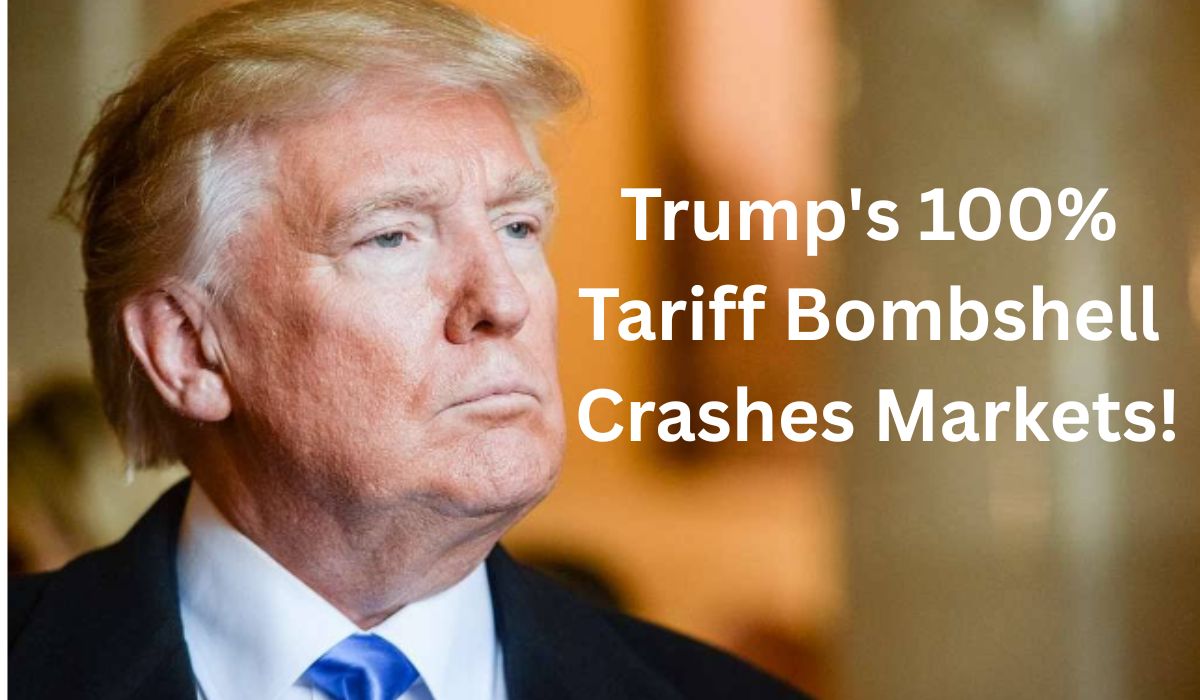This morning’s market action tells a clear story – Trump’s latest tariff announcements have investors on edge, and the ripple effects are already showing up across global markets. What caught my attention immediately was the sweeping nature of these new measures and how quickly they’re impacting sector-specific plays.
The Tariff Details That Matter
Trump posted on Truth Social, announcing “100% tariffs on imported drugs unless US manufacturing begins.” But here’s what stands out in the fine print – companies qualify for exemption if they’re “building their pharmaceutical manufacturing plant in America,” specifically defined as “breaking ground and/or under construction.”
This is significant. Really significant.
Most major innovator companies – the Eli Lillys, Novartis, and Pfizers of the world – are already in various stages of US manufacturing expansion. The pattern here suggests this follows the semiconductor playbook we saw earlier, where companies made investment commitments and tariff impacts remained limited.
The broader tariff sweep includes 25% on heavy trucks, kitchen cabinets, bathroom vanities, and upholstered furniture. What emerges from this analysis is that most affected manufacturing happens in Vietnam, Southeast Asia, and China – not India. Indian pharma exports are predominantly generics, which operate in a different space entirely from these branded, IP-protected drugs being targeted.
Market Response Reveals Deeper Concerns
The overnight action wasn’t pretty. NASDAQ dropped 0.5%, but what really caught my eye was the dollar index movement – we’re now approaching 98.5 after consecutive days of 0.5-0.6% gains. Oil pushed toward $70 per barrel, adding another layer of complexity to the inflation picture.
Asian markets are extending Wall Street’s weakness, with Hong Kong down 1% and Japanese pharma stocks taking particular hits. The Daiichi Sankyo types are tumbling as investors price in potential disruptions to global pharmaceutical supply chains.
Technical Picture Getting Critical
Looking at the Indian market specifically, Nifty closed below key daily averages for the fifth consecutive session. The critical defense level I’m watching is 24,800 – this represents the 61.8% retracement of the recent thousand-point rally. If this level breaks, we’re looking at more than just a correction within the broader uptrend.
Bank Nifty is testing its 20-day moving average at 54,680, while the broader market pain is amplified by margin trading funding that’s jumped from 60-70,000 crores to elevated levels around 98,000 crores. This creates additional pressure on broader market indices when headline indices struggle.
The FII-DII Dynamic
The options data reveals aggressive call writing, with FIIs adding 6,500 short contracts in index futures. What’s particularly interesting is the massive open interest buildup in 25,000 calls – more than a crore shares added. However, there’s some defensive writing appearing in 24,900 puts, reinforcing that 24,800 support level.
The put-call ratio dropping to 0.68 shows the market’s defensive positioning, but FII selling continues to outweigh DII buying, especially in those final trading hours.
Economic Context That Changes Everything
Here’s the thing that surprised me – US third quarter GDP got a massive upward revision to 3.8%, nearly touching 4%. This might reflect front-loading of imports ahead of expected tariffs, but it’s also making Fed rate cut timing less certain. Strong economic data plus tariff-driven inflation concerns create a complex environment for monetary policy.
Contrarian Opportunity Emerging?
HSBC’s Harald Vanderland just turned optimistic on Indian equities, noting they’ve underperformed emerging markets by 32 percentage points since mid-September – the worst performance since 2001. His analysis suggests valuations have corrected enough to make the market attractive again, with the premium to regional markets back at historical levels.
His top picks include Marico, Trent, Mahindra & Mahindra, Phoenix Mills, HDFC Bank, ICICI Lombard, UltraTech Cement, Infosys, Adani Ports, Divis Labs, and NTPC. The thesis: earnings are near bottom and set to improve as lower inflation and easing measures support growth.
What I’m Watching Next
The immediate focus should be on how pharmaceutical companies respond to manufacturing requirement clarifications. Most established players likely meet the “under construction” criteria already, but clarity on implementation timelines will be crucial.
For Indian markets, that 24,800 Nifty support becomes make-or-break. A decisive break could trigger broader selling, especially given elevated margin funding levels. Conversely, a successful defense might signal the correction phase is ending.
The dollar’s continued strength adds another variable for emerging market flows, while oil’s move toward $70 creates both inflation concerns and energy sector implications.
This tariff announcement feels more like positioning than immediate disruption, but markets are treating it seriously. The question becomes whether this represents tactical pressure for manufacturing commitments or the beginning of broader trade restrictions. Based on the semiconductor precedent, I’m leaning toward the former, but staying alert for implementation details that could change that assessment.
